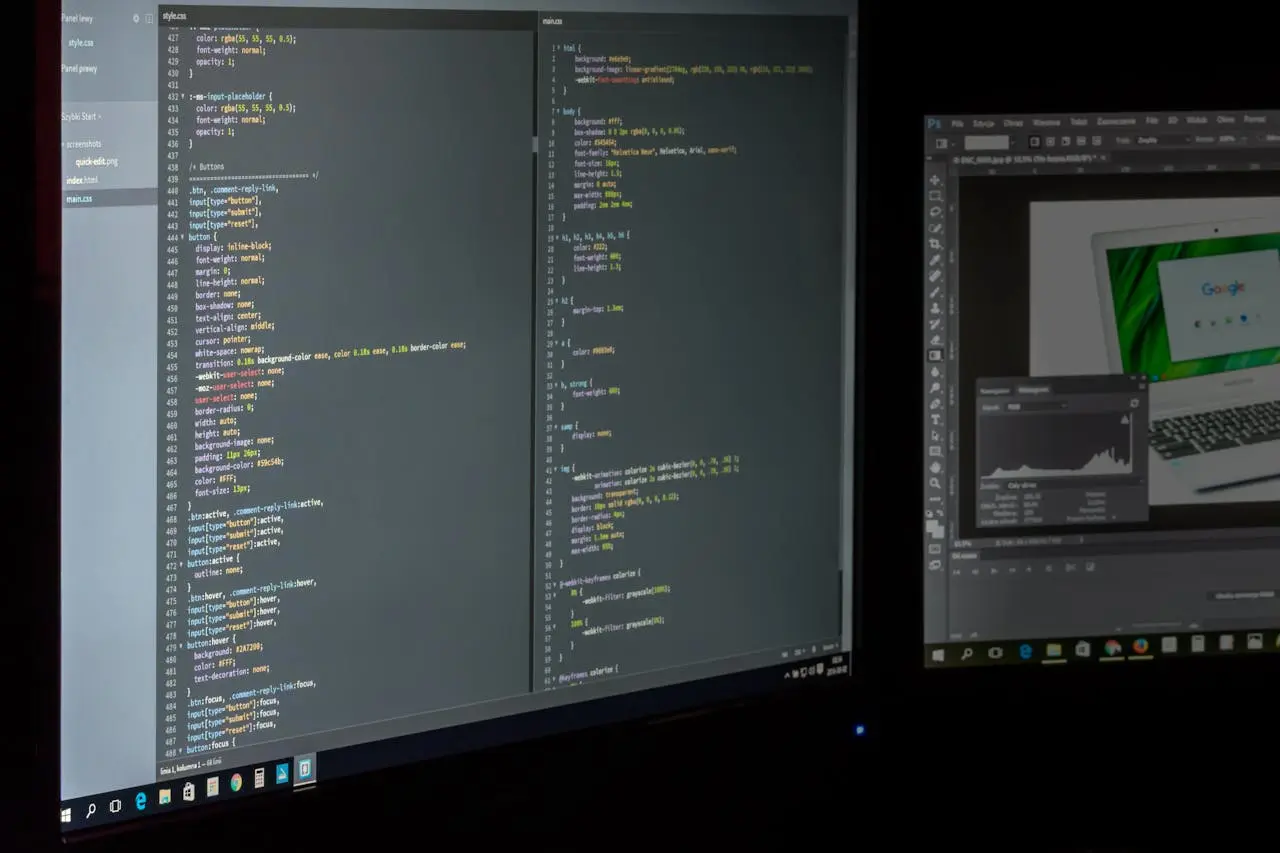Array of Pointers
An array of pointers is an array where each element is a pointer to another variable or an array. This concept is useful for creating arrays that can store addresses of different data types or arrays, allowing for flexible and dynamic data structures.
Declaration and Initialization
An array of pointers can be declared by specifying the type of data the pointers will point to, followed by an asterisk (*), and then the array name with square brackets indicating the size of the array.
Example
#include <stdio.h>
int main() {
int a = 10, b = 20, c = 30;
int *arr[3];
arr[0] = &a;
arr[1] = &b;
arr[2] = &c;
for (int i = 0; i < 3; i++) {
printf("Value at arr[%d] = %d\n", i, *arr[i]);
}
return 0;
}
Array of Pointers to Strings
An array of pointers is often used to create an array of strings, where each element of the array points to the first character of a string.
Example
#include <stdio.h>
int main() {
char *arr[] = {
"Hello",
"World",
"C Programming"
};
for (int i = 0; i < 3; i++) {
printf("String at arr[%d] = %s\n", i, arr[i]);
}
return 0;
}
Understanding arrays of pointers is essential for dynamic memory management, creating flexible data structures, and handling complex data efficiently in C programming.
Pointers and their characteristics
Pointers are a fundamental concept in C and C++ programming that allow for efficient memory management and manipulation. Understanding pointers and their characteristics is crucial for writing effective and optimized code. Here’s an explanation of pointers and their key characteristics:
What is a Pointer?
A pointer is a variable that stores the memory address of another variable. Instead of holding a data value directly, a pointer holds the address where the value is stored in memory.
- Example: If you have an integer variable
x, a pointer to x will hold the memory address where x is stored.
int x = 10;
int *ptr = &x;
Characteristic features of Pointers:
- The program execution time will be faster as the data is manipulated with the
help of addresses directly.
- Will save the memory space.
- The memory access will be very efficient
- Dynamic memory is allocated.
Address and Indirection Operators
In C programming, two important operators are used with pointers: the address operator (&) and the indirection operator (*).
Address Operator (&):
- It is used to find the memory address where a variable is stored.
- When you use
& before a variable, it gives you the location in memory where that variable is kept. - Example: If you have an integer variable
x, using &x will give you the address of x.
Indirection Operator (*):
- It is used to access the value stored at a specific memory address.
- When you use
* with a pointer (a variable that holds a memory address), it retrieves the value stored at that address. - Example: If you have a pointer
p that holds the address of x, then *p will give you the value of x.
Example
#include <stdio.h>
int main() {
int x = 10;
int *ptr = &x;
printf("Address of x: %p\n", (void*)&x);
printf("Value at address held by ptr: %d\n", *ptr);
return 0;
}
Pointer Type Declaration & Assignment
In C programming, pointers are used to store memory addresses. Understanding how to declare and assign pointers is essential for efficient programming. Here’s a simplified explanation of pointer type declaration and assignment:
Pointer Type Declaration
When you declare a pointer, you need to specify the type of data it will point to. This helps the compiler understand how to interpret the data at the memory address the pointer holds.
Basic Syntax
here type: The data type of the variable the pointer will point to (e.g., int, float, char), *pointerName: Declares a variable as a pointer to the specified type.
Example
int *ptr; float *fptr; char *cptr;
Pointer Assignment
Assigning a value to a pointer involves setting it to the address of a variable. You use the address-of operator (&) to get the address of a variable.
Example
int x = 10; int *ptr = &x;
Pointer to Pointer:
A pointer to a pointer is a variable that holds the address of another pointer. This is useful for handling multi-dimensional arrays and dynamic memory management.
Example:
int x = 10;
int *ptr1 = &x;
int **ptr2 = &ptr1;
Null Pointers:
A null pointer is a pointer that does not point to any valid memory location. It is often used to indicate that the pointer is not initialized or is not pointing to a valid object.
Example: The constant NULL or nullptr in C++ can be used to initialize a null pointer.
Pointer Arithmetic:
You can perform arithmetic operations on pointers, such as incrementing or decrementing. This moves the pointer to point to the next or previous memory location based on the type it points to.
Example: In an array, incrementing a pointer moves it to the next element.
int arr[5] = {1, 2, 3, 4, 5};
int *ptr = arr;
ptr++;
Passing Pointers to Functions
Passing pointers to functions is a powerful technique in C programming that allows functions to modify variables outside their local scope, work with arrays efficiently, and manage dynamic memory. Here’s a detailed explanation with examples:
Why Pass Pointers to Functions?
- Modify Original Variables: Functions can modify the actual variables passed to them, not just copies.
- Efficiently Handle Arrays: Arrays are always passed by reference using pointers, avoiding the overhead of copying large amounts of data.
- Dynamic Memory Management: Functions can dynamically allocate, modify, and deallocate memory.
How to Pass Pointers to Functions
When passing a pointer to a function, you provide the address of the variable. The function can then use the pointer to access and modify the original variable.
Syntax
void functionName(type *pointerName) {
}
here, type *pointerName: A pointer parameter that will receive the address of a variable.
Example : Modifying an Integer Variable
#include
void modifyValue(int *ptr) {
*ptr = 20;
}
int main() {
int x = 10;
printf("Before: x = %d\n", x);
modifyValue(&x);
printf("After: x = %d\n", x);
return 0;
}
In C programming, functions can receive arguments using two primary methods: pass by value and pass by reference. Understanding these methods is crucial for managing how data is passed to functions and how changes to that data are handled.
Pass by Value
Pass by value means that when a function is called, the values of the arguments are copied to the function's parameters. Any changes made to the parameters within the function do not affect the original arguments.
Example
#include <stdio.h>
void swap(int a, int b) {
int temp = a;
a = b;
b = temp;
}
int main() {
int x = 10;
int y = 20;
printf("Before swap: x = %d, y = %d\n", x, y);
swap(x, y);
printf("After swap: x = %d, y = %d\n", x, y);
return 0;
}
Pass by Reference
Pass by reference means that when a function is called, the addresses of the arguments are passed to the function's parameters. Any changes made to the parameters within the function do affect the original arguments.
Example
#include <stdio.h>
void swap(int *a, int *b) {
int temp = *a;
*a = *b;
*b = temp;
}
int main() {
int x = 10;
int y = 20;
printf("Before swap: x = %d, y = %d\n", x, y);
swap(&x, &y);
printf("After swap: x = %d, y = %d\n", x, y);
return 0;
}
Arrays and Pointers
In C, the name of an array is a constant pointer to the first element of the array. This means that arr (an array) and &arr[0] (the address of the first element) are equivalent.
Example
#include <stdio.h>
int main() {
int arr[5] = {1, 2, 3, 4, 5};
for (int i = 0; i < 5; i++) {
printf("arr[%d] = %d\n", i, arr[i]);
}
for (int i = 0; i < 5; i++) {
printf("*(arr + %d) = %d\n", i, *(arr + i));
}
return 0;
}
here, arr[i]: Accesses the ith element of the array, *(arr + i): Uses the array name (arr) as a pointer and adds i to get the address of the ith element. Dereferencing (*) this address gives the value of the ith element.
Pointer to an Array
You can also declare a pointer to an array and use it to access array elements.
Example
#include <stdio.h>
int main() {
int arr[5] = {1, 2, 3, 4, 5};
int *ptr = arr;
for (int i = 0; i < 5; i++) {
printf("*(ptr + %d) = %d\n", i, *(ptr + i));
}
return 0;
}
Array as Function Arguments
When passing an array to a function, what is actually passed is a pointer to the first element of the array.
Example
#include <stdio.h>
void printArray(int *arr, int size) {
for (int i = 0; i < size; i++) {
printf("arr[%d] = %d\n", i, arr[i]);
}
}
int main() {
int arr[5] = {1, 2, 3, 4, 5};
int size = sizeof(arr) / sizeof(arr[0]);
printArray(arr, size);
return 0;
}
Multidimensional Arrays
A multidimensional array is an array of arrays. The most common form is a two-dimensional array, which can be thought of as a matrix or a table with rows and columns.
Example of a Two-Dimensional Array
#include <stdio.h>
int main() {
int matrix[3][4] = {
{1, 2, 3, 4},
{5, 6, 7, 8},
{9, 10, 11, 12}
};
printf("Element at [1][2]: %d\n", matrix[1][2]);
return 0;
}
Pointers and Multidimensional Arrays
Array of Arrays
In the case of a two-dimensional array, each element of the main array is a sub-array. The name of the array acts as a pointer to the first sub-array.
Here, matrix can be considered as a pointer to an array of 4 integers.
Pointer to an Array
You can declare a pointer to an array and use it to access elements in a multidimensional array.
int (*ptr)[4];
ptr = matrix;
Accessing Elements Using Pointers
You can access elements of a multidimensional array using pointers with pointer arithmetic.
Example
#include <stdio.h>
int main() {
int matrix[3][4] = {
{1, 2, 3, 4},
{5, 6, 7, 8},
{9, 10, 11, 12}
};
int (*ptr)[4] = matrix;
printf("Element at [1][2]: %d\n", *(*(ptr + 1) + 2));
printf("Element at [2][3]: %d\n", ptr[2][3]);
return 0;
}
Understanding how pointers interact with multidimensional arrays allows for efficient data manipulation and is fundamental for advanced programming in C.
Array of Pointers
An array of pointers is an array where each element is a pointer to another variable or an array. This concept is useful for creating arrays that can store addresses of different data types or arrays, allowing for flexible and dynamic data structures.
Declaration and Initialization
An array of pointers can be declared by specifying the type of data the pointers will point to, followed by an asterisk (*), and then the array name with square brackets indicating the size of the array.
Example
#include <stdio.h>
int main() {
int a = 10, b = 20, c = 30;
int *arr[3];
arr[0] = &a;
arr[1] = &b;
arr[2] = &c;
for (int i = 0; i < 3; i++) {
printf("Value at arr[%d] = %d\n", i, *arr[i]);
}
return 0;
}
Array of Pointers to Strings
An array of pointers is often used to create an array of strings, where each element of the array points to the first character of a string.
Example
#include <stdio.h>
int main() {
char *arr[] = {
"Hello",
"World",
"C Programming"
};
for (int i = 0; i < 3; i++) {
printf("String at arr[%d] = %s\n", i, arr[i]);
}
return 0;
}
Understanding arrays of pointers is essential for dynamic memory management, creating flexible data structures, and handling complex data efficiently in C programming.





John Doe
5 min agoLorem ipsum dolor sit amet, consectetur adipisicing elit, sed do eiusmod tempor incididunt ut labore et dolore magna aliqua. Ut enim ad minim veniam, quis nostrud exercitation ullamco laboris nisi ut aliquip ex ea commodo consequat.
ReplyJohn Doe
5 min agoLorem ipsum dolor sit amet, consectetur adipisicing elit, sed do eiusmod tempor incididunt ut labore et dolore magna aliqua. Ut enim ad minim veniam, quis nostrud exercitation ullamco laboris nisi ut aliquip ex ea commodo consequat.
Reply